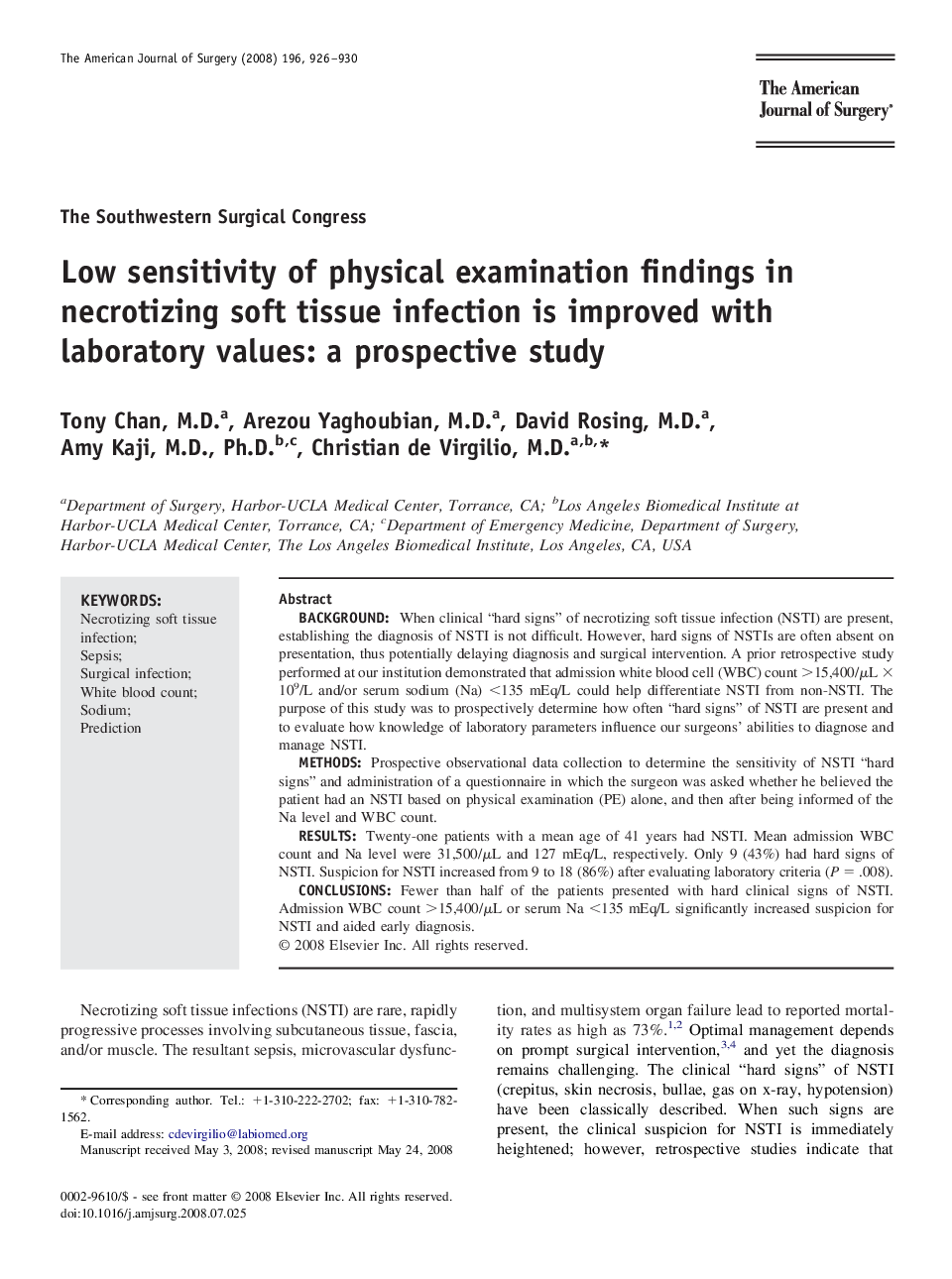| Article ID | Journal | Published Year | Pages | File Type |
|---|---|---|---|---|
| 4280933 | The American Journal of Surgery | 2008 | 5 Pages |
BackgroundWhen clinical “hard signs” of necrotizing soft tissue infection (NSTI) are present, establishing the diagnosis of NSTI is not difficult. However, hard signs of NSTIs are often absent on presentation, thus potentially delaying diagnosis and surgical intervention. A prior retrospective study performed at our institution demonstrated that admission white blood cell (WBC) count >15,400/μL × 109/L and/or serum sodium (Na) <135 mEq/L could help differentiate NSTI from non-NSTI. The purpose of this study was to prospectively determine how often “hard signs” of NSTI are present and to evaluate how knowledge of laboratory parameters influence our surgeons' abilities to diagnose and manage NSTI.MethodsProspective observational data collection to determine the sensitivity of NSTI “hard signs” and administration of a questionnaire in which the surgeon was asked whether he believed the patient had an NSTI based on physical examination (PE) alone, and then after being informed of the Na level and WBC count.ResultsTwenty-one patients with a mean age of 41 years had NSTI. Mean admission WBC count and Na level were 31,500/μL and 127 mEq/L, respectively. Only 9 (43%) had hard signs of NSTI. Suspicion for NSTI increased from 9 to 18 (86%) after evaluating laboratory criteria (P = .008).ConclusionsFewer than half of the patients presented with hard clinical signs of NSTI. Admission WBC count >15,400/μL or serum Na <135 mEq/L significantly increased suspicion for NSTI and aided early diagnosis.
